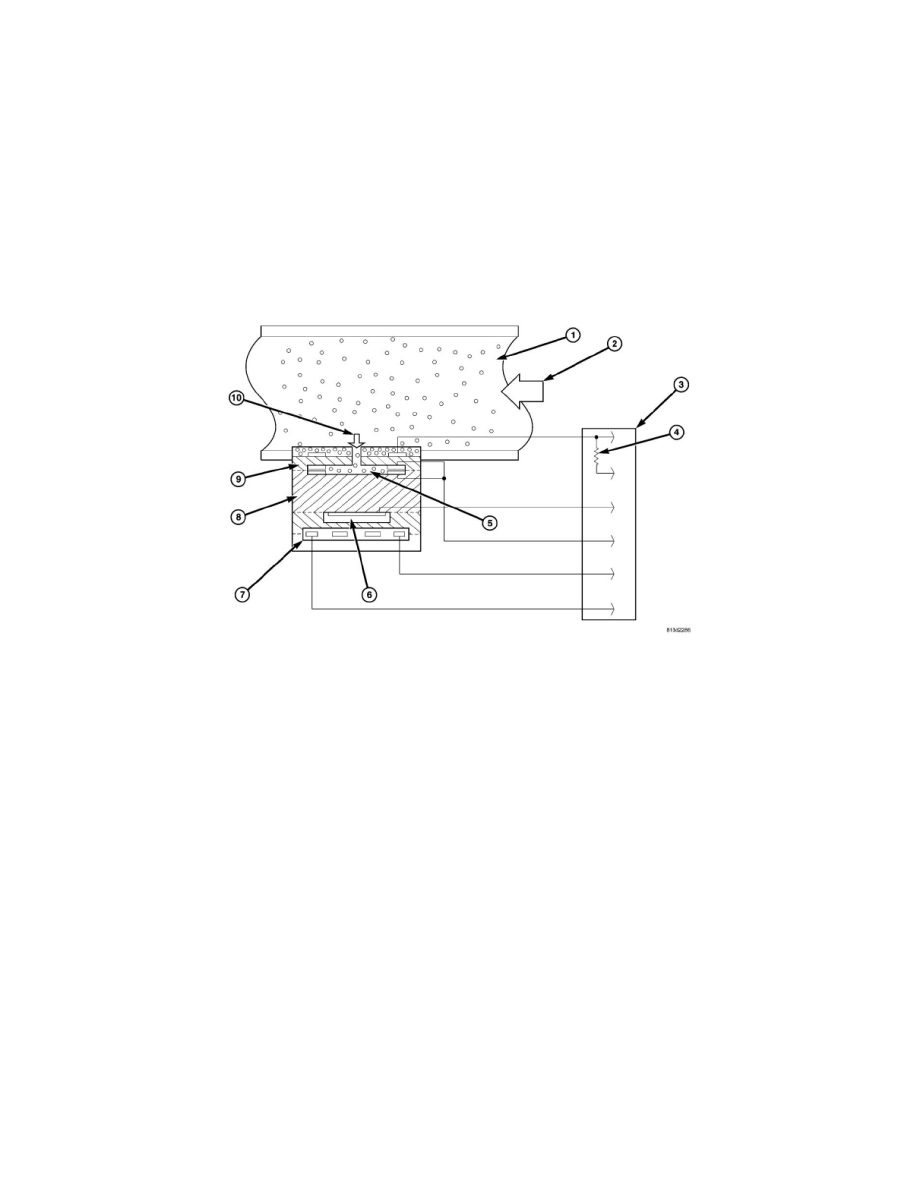Sprinter 2500 V6-3.0L DSL Turbo (2008)

Oxygen Sensor: Description and Operation
Operation
OPERATION
The O2 sensor is a planar zirconium dioxide (ZrO2) dual cell limiting current probe with a integral heater. The term wide ban, refers to the ability of the
O2 sensor to generate a clear signal over a wide air-fuel ratio measuring range. As a dual sensor, it incorporates a second O2 chamber (oxygen pump
cell), which requires a separate voltage supply.
The sensor element combines a sensor cell (8) and an oxygen pump cell (9). Both cells are made of zirconium-dioxide (ZrO2) and are coated with
porous platinum electrodes. The sensor cell operates just like a typical O2 sensor. The oxygen pump cell transport oxygen ions when voltage is applied.
A gas sample chamber (5) is sandwiched between the oxygen pump cell and the sensor cell. A pump electrode and sensor cell electrode are located in the
sample chamber. A sample passage (10) connects the sample chamber to the surrounding exhaust gas. A sensor cell electrode is located in the reference
air channel (6), which connects to the outside air.
At high temperatures, certain ceramic materials, such as zirconium-dioxide (ZrO2) become oxygen ion conductors. In a typical O2 sensor, the ZrO2 is
used as a solid electrolyte, which conducts oxygen ions. The solid electrolyte is sandwiched between two platinum electrodes. The sensor generates a
small voltage when oxygen moves from the high concentration side to the low concentration side.
The same hold true if the process is reversed. If voltage is applied to the platinum electrodes, oxygen can be pumped from one side of the solid
electrolyte to the other (from cathode to anode), becoming an oxygen pump. The amount of current flow is directly proportional to the amount of oxygen
pumped by the sensor. When the oxygen level on the supply side reaches zero, the current stops.
The ECM activates the integral heater element to raise the temperature of the sensor to 700C (192°F) for the ZrO2 to become conductive. The heater
element is designed to reach this temperature within 8 seconds and maintaining it at this level. In cold temperatures, this can be delayed up to 5 minutes
to prevent damaging the ceramic coating of the sensor from water condensation. Once the sensor is heated, the exhaust gas components diffuse through
the gas sample chamber. Upon reaching the electrodes on the oxygen pump and concentration cells they reach state of thermodynamic balance.
